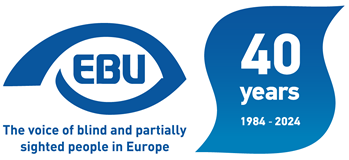Education systems
Equal access to national education, vocational training and lifelong learning systems
Educational settings - mainstream education
Education settings - special education
Collaboration between both systems
Teaching of compensatory skills made necessary by vision loss
Provision of accessible text books and other educational material
Provision of assistive technology
1. Equal access to:
1.1. National education system
The first choice is to include pupils with special educational needs in mainstream classes, but when necessary, education may also be provided in a small group or special class within mainstream school.
1.2. National vocational training and lifelong learning systems
Finnish education policy definitions expect all young people completing comprehensive school to continue studying at upper secondary level. Since it is the task of vocational education and training to also provide special instruction, students admitted to such education and training have been very different. Consequently, in the 1990s, special needs education and training developed considerably and the number of students receiving special instruction increased.
2. Educational settings
2.1.
Special needs education (SNE) is provided in pre-primary and upper secondary education and training. The objective is to support pupils in such a way that they have equal opportunities to complete their schooling according to their abilities alongside their peers. Pupils with minor learning or adjustment difficulties receive part-time special needs education by a SNE teacher in conjunction with mainstream education.
2.1.1. Primary
The physical and social learning environment and the necessary support services in children's pre-school education shall primarily be organised so as to enable children to participate in group activities as fully as possible.
2.1.2. Secondary
Provision of special education must always ensure that the required interpretation and assistant services for participation in education have been organised, as well as other teaching and pupil welfare services, rehabilitation needed in connection with special education and development, guidance and support tasks related to instruction, and that special aids have been acquired.
2.1.3. University
2.1.4. Vocational training and lifelong learning
In vocational education and training, students in need of special educational or student welfare services are provided with instruction in the form of special education and training. An individual education plan is to be drawn up for each student receiving special education and training.
2.2. Special education
In 2008, 47,300 children were admitted or transferred to special needs education, which is 8.4 % of all the pupils in basic education. The number of pupils in part-time special needs education was 126,300, which is 22.5 % of all the pupils in basic education.
2.2.1. Primary
2.2.2. Secondary
There are two state subsidized schools for the visually impaired in Finland:
- Jyväskylä School for The V.I. (residential school and support center for integration for Finnish-speaking population)
- Swedish Speaking School for The V.I. in Helsinki (School and support center for integration for the Swedish-speaking population)
2.2.3. University
2.2.4. Vocational training and lifelong learning
2.3. Collaboration between both systems
2.3.1. Primary
2.3.2. Secondary
2.3.3. University
2.3.4. Vocational training and lifelong learning
3. Teaching of compensatory skills made necessary by vision loss
3.1. Subjects (Braille, computer, daily-living skills, mobility, etc.)
3.2. Training and certificates for visually impaired teachers (Braille, computer, daily-living skills, mobility, etc.)
Jyväskylä School for The V.I. offers three to nine day courses for teachers and assistants and other personnel working with pupils with V.I.
Content:
- Information on visual impairment and its effects on learning
- Training special skills to cope with special needs caused bi V.I.
- Tools for everyday teaching and assisting
- Network issues
3.3. Training and certificates for visually impaired students (Braille, computer, daily-living skills, mobility, etc.)
4. Provision of accessible text books and other educational material
Celia is a Finnish state-owned specialist library which produces and provides literature in accessible formats for people who are unable to read standard printed books, due to illness or disability – including visually impaired persons, persons suffering from dyslexia and learning disabilities, developmental disabilities and muscular diseases. Celia's aim is to work towards equality for the visually impaired and those with other print disabilities, in terms of access to literature and information. Celia is also a specialist institution within its field. In 2008, Celia had around 14,000 users who took out almost one million loans in total. Along with individual users with print disabilities, our users also include organisations such as retirement homes, daycare centers and libraries who have members with print disabilities.
4.1. Provision of the basic documents
Jyväskylä School for The V.I. provides
- A wide variety of supplementary learning materials for visually impaired school children
- Embossed Swellpaper nd plastic pictures (Thermoform) , computerised braille text
- Elementary books for training Braille reading techniques
- Embossed pictures in biology, geography, history, in fine arts and religion
- Individually designed mobility maps
4.2. Adaptation and transcription of the documents
5. Provision of assistive technology
5.1. Primary
5.2. Secondary
5.3. University
5.4. Vocational training and lifelong learning
(Sources - http://eacea.ec.europa.eu/education/eurydice/eurybase_en.php#finland August 2009,
http://www.european-agency.org/country-information/finland 2009
http://www.icevi-europe.org/national/fi.html 2009
http://www.celia.fi/web/guest/english 2009)

